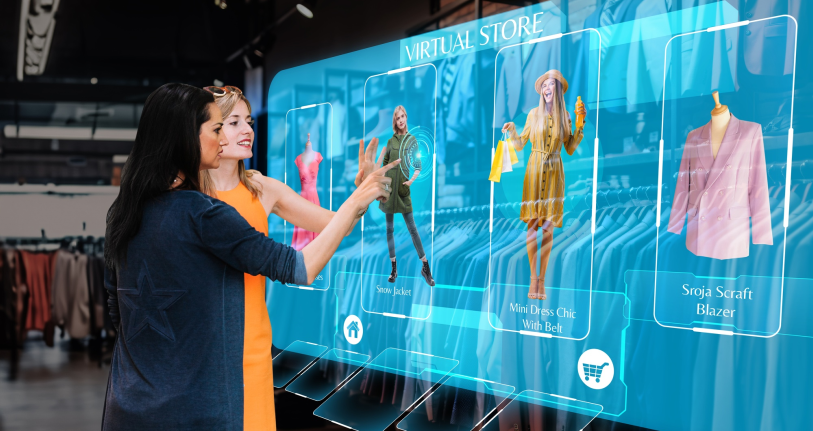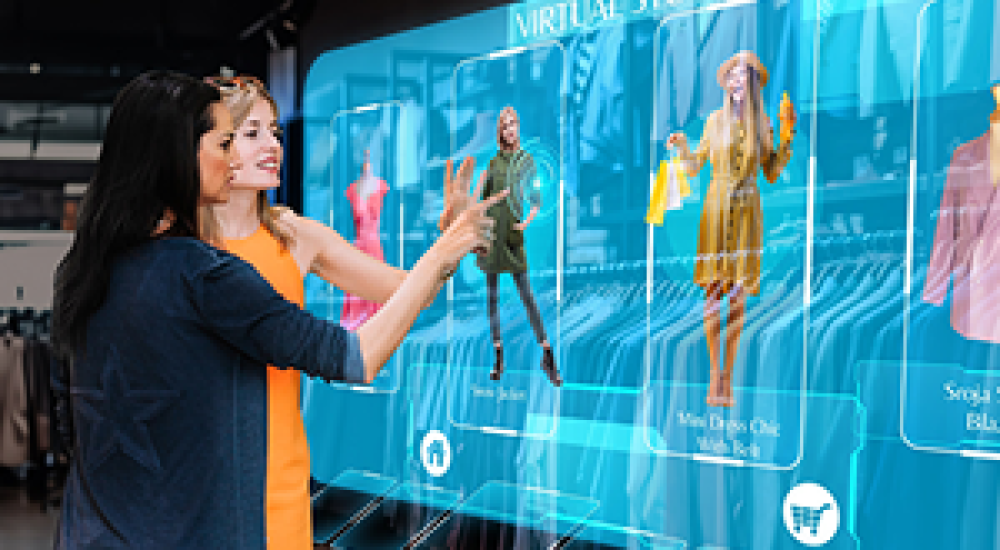
Introduction
The retail industry has always been subject to constant innovation, and in recent years, Artificial Intelligence (AI) has emerged as a game-changer in shaping the future of shopping. With the ever-increasing reliance on technology and the growing demand for personalized experiences, AI has found its way into various aspects of the shopping journey. From improving customer engagement to optimizing supply chains, AI is revolutionizing the retail landscape in unprecedented ways. This article explores the significant ways AI is transforming the future of shopping and the potential impact it will have on consumers and retailers alike.
Personalized Shopping Experience

One of the key areas where AI is revolutionizing shopping is in personalization. AI-driven algorithms analyze vast amounts of customer data, including browsing history, purchase behavior, demographics, and social media interactions, to understand individual preferences better. This data is then used to deliver personalized shopping experiences, suggesting products and services that match the customer’s interests and needs.
For instance, online retailers like Amazon use AI-powered recommendation engines to offer customers a curated selection of products based on their past purchases and browsing history. This level of personalization not only enhances customer satisfaction but also leads to increased customer loyalty and higher conversion rates.
Virtual Shopping Assistants
AI-driven virtual shopping assistants are another aspect that is revolutionizing the shopping experience. These virtual assistants act as personal shoppers, helping customers find products, compare prices, and make informed purchase decisions. By leveraging natural language processing (NLP) and machine learning, virtual shopping assistants can engage in meaningful conversations with customers and provide real-time assistance.
For example, AI-powered chatbots deployed on e-commerce websites can answer customer queries, offer product recommendations, and even handle complaints. These virtual assistants provide round-the-clock support, improving customer service and reducing the workload on human customer support teams.
Augmented Reality for Enhanced Visualization

Augmented Reality (AR) is an AI-driven technology that is transforming how customers interact with products before making a purchase. AR applications allow consumers to virtually try on clothing, accessories, and even furniture in real-time, giving them a more immersive and interactive shopping experience.
For instance, in the fashion industry, virtual fitting rooms powered by AR technology enable customers to see how clothes will fit and look on their bodies without physically trying them on. This not only saves time for customers but also reduces the number of returns, benefiting both consumers and retailers.
Predictive Analytics for Inventory Management

AI is revolutionizing inventory management through predictive analytics. Retailers generate massive amounts of data from sales transactions, customer behavior, and market trends. AI algorithms can analyze this data to predict demand patterns accurately.
By leveraging AI-powered predictive analytics, retailers can optimize their inventory levels, reducing the risk of overstocking or stockouts. This results in cost savings, improved efficiency, and enhanced customer satisfaction, as products are readily available when customers need them.
Autonomous Stores and Checkout Processes
AI is enabling the concept of autonomous stores, where customers can walk in, pick up items they want, and simply walk out without going through a traditional checkout process. These stores use a combination of AI, computer vision, and sensor technologies to track customers and their selected items, automatically charging their accounts as they leave the store.
Amazon Go stores are a prominent example of this technology. By eliminating the need for physical checkout, autonomous stores offer a frictionless and time-efficient shopping experience, attracting tech-savvy consumers and reducing queue lengths.
Voice Commerce and Smart Speakers

The rise of voice-activated smart speakers like Amazon Echo and Google Home is opening up new avenues for AI-powered voice commerce. Customers can now shop for products and services using voice commands, making the shopping process even more convenient and hands-free.
AI-driven voice assistants, like Amazon’s Alexa, can understand natural language and provide personalized recommendations based on user preferences. This enables customers to make purchases effortlessly, reordering products they regularly use, or exploring new offerings based on their conversations with the voice assistant.
Dynamic Pricing Strategies
AI is revolutionizing pricing strategies through dynamic pricing. Traditional pricing models often relied on fixed prices or periodic promotions. AI-driven dynamic pricing algorithms, on the other hand, consider real-time data, such as demand, competition, and customer behavior, to adjust prices on the fly.
Online retailers can use dynamic pricing to offer personalized discounts to individual customers, making the pricing more attractive and increasing the likelihood of making a sale. Dynamic pricing also allows retailers to respond quickly to changes in market conditions, stay competitive, and optimize revenue.
Fraud Detection and Security

As e-commerce continues to grow, so does the threat of fraud and cybersecurity breaches. AI-powered fraud detection systems leverage machine learning algorithms to analyze transaction data and identify potential fraudulent activities.
These AI systems can recognize patterns and anomalies in customer behavior, helping retailers detect and prevent fraudulent transactions in real-time. By enhancing security measures, AI is making online shopping safer, fostering trust among consumers and ensuring the continued growth of e-commerce.
Conclusion
The integration of AI into the retail industry is transforming the future of shopping, making it more personalized, efficient, and convenient for consumers. From personalized product recommendations to AI-driven chatbots and virtual shopping assistants, AI is reshaping how consumers interact with brands and make purchase decisions. Moreover, the use of augmented reality for visualization, autonomous stores, voice commerce, dynamic pricing, and fraud detection is enhancing the overall shopping experience and optimizing retail operations.
For retailers, embracing AI-driven technologies is no longer a luxury but a necessity to stay competitive in a rapidly evolving market. By leveraging the power of AI, retailers can gain valuable insights into customer behavior, streamline operations, and offer unparalleled shopping experiences. As AI technology continues to advance, the future of shopping holds even more exciting possibilities, with AI becoming an indispensable tool for both consumers and retailers alike.















